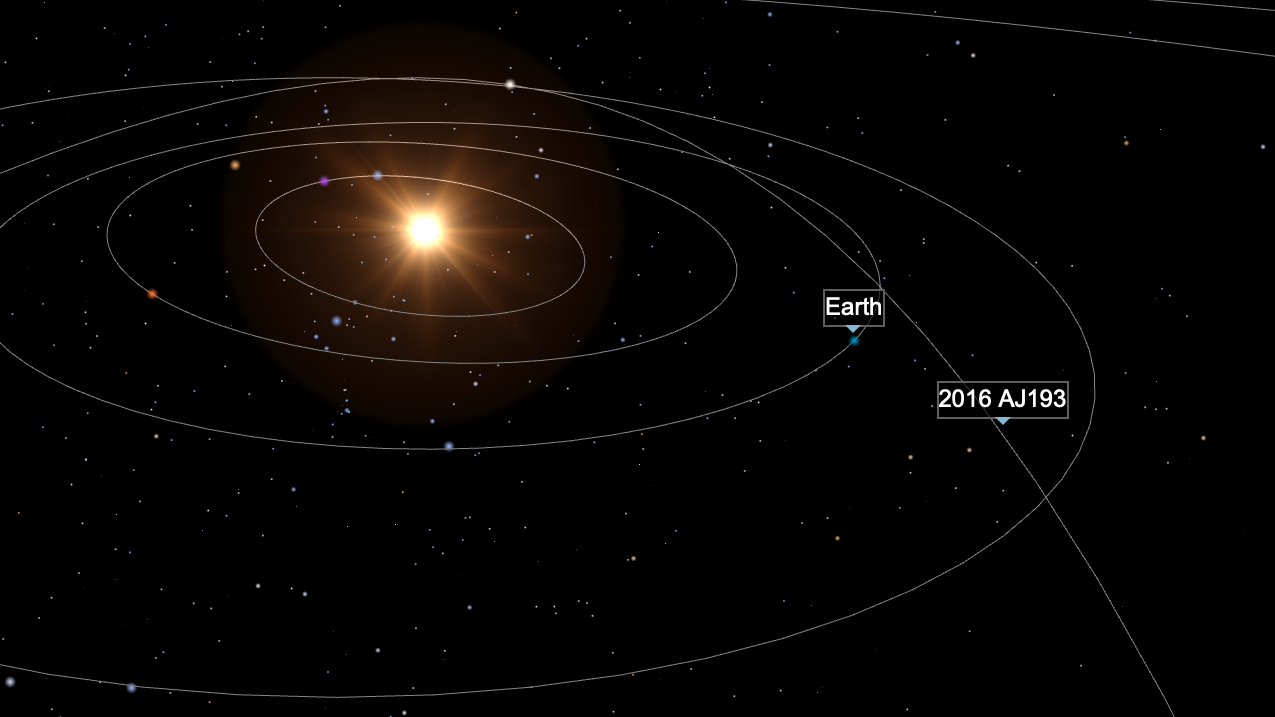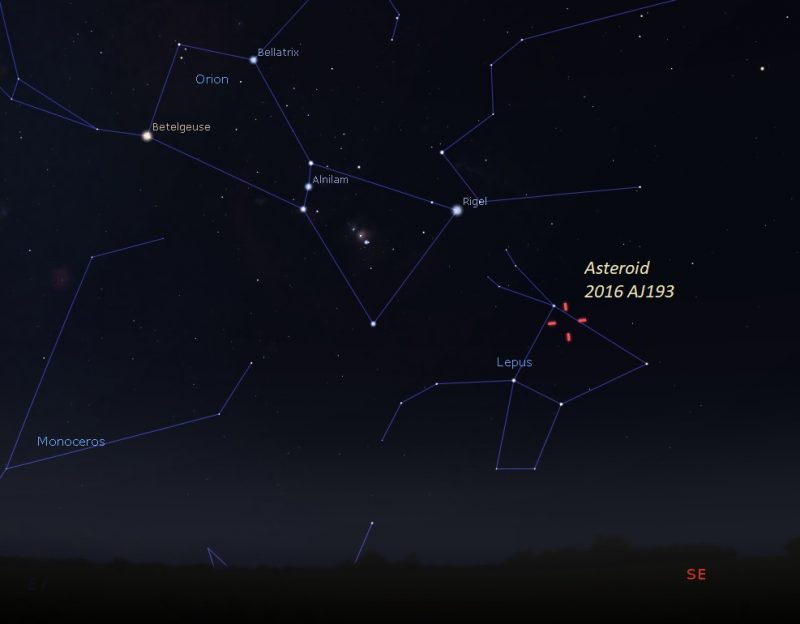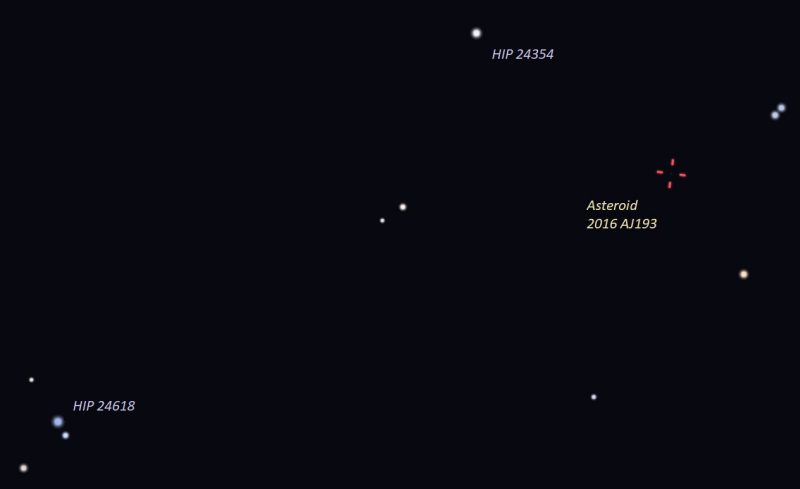
Close asteroid pass August 21
A good-sized asteroid will pass by Earth on Saturday, August 21, 2021. There is no danger it will strike our planet. It’s been designated as asteroid 2016 AJ193. It’s estimated to be just under a mile wide (1.4 km wide). And it’s moving fast. It’s traveling at 58,538 miles per hour (94,208 km/h) relative to Earth. That’s about about 16 miles per second (26.17 km per second). Closest approach to Earth will occur on August 21, 2021, at 11:10 a.m. ET (15:10 UTC). This means the best opportunity for amateur astronomers to try to capture this asteroid will be early on August 21, just hours before sunrise. See charts below.
NASA/JPL has classified 2016 AJ193 as a Potentially Hazardous Asteroid. However, the space rock’s orbit is well known and there is no risk of impact.
Notice the asteroid’s designation: 2016 AJ193. The Panoramic Survey Telescope and Rapid Response System (Pan-STARRS) facility – located at Haleakala Observatory, Hawaii – first spotted it in January 2016. Pan-STARRS consists of astronomical cameras, telescopes and a computing facility. It’s surveying the sky for close-passing asteroids such as this one. NASA’s NEOWISE spacecraft was then used to observe the asteroid. Astronomers reported a diameter as just under a mile (1.4 km) at that time. They also noticed the asteroid is very dark (not very reflective). The asteroid’s rotation period, pole direction, and spectral
class are all unknown. Thus astronomers intend to be watching when 2016 AJ193 passes this time.
As mentioned above, this asteroid orbits around the sun every 5.9 years. It gets relatively close to Earth’s orbit, but then travels beyond the orbit of Jupiter. The August 21 flyby will be this asteroid’s closest approach to Earth at least for the next 65 years, the longest period for which its orbit has been calculated.
Just don’t worry about a collision between this asteroid and Earth. At its closest to Earth, asteroid 2016 AJ193 will sweep some 8.9 times the moon’s distance from us. That’s a huge and safe distance, but relatively close for a 1.4-km space rock. It’ll be close enough that both amateur and professional astronomers will be able to spot it and study it.
Pro astronomers will use radar
NASA scientists plan to use radar to observe asteroid 2016 AJ193 between August 20 and 24. Bouncing radar signals off an asteroid lets astronomers study the object’s shape, size and spin. Sometimes astronomers manage to acquire amazing radar images of asteroids.
The radar signals sent to asteroid 2016 AJ193 will be transmitted from Goldstone Antenna in California, along with small radars in Australia, Spain and Italy.
Check out Goldstone Observations Planning for asteroid 2016 AJ193 here.

Telescope users will track its motion
In addition, amateur astronomers equipped with telescopes will be able to see the asteroid. They’ll be able to track this fast-moving object as it moves in front of the stars. They’ll be able to photograph it as it glides by our planet. The asteroid will never become visible to the eye alone. But observers using 8-inch (20-cm) telescopes and larger will be able to get a glimpse of it. At its brightest, it will shine at 14th magnitude.


Bottom line: Asteroid 2016 AJ193 will pass close on August 21, 2021. In early August, it’s rushing inward toward the sun. It will not strike Earth.
"close" - Google News
August 01, 2021 at 08:03PM
https://ift.tt/3jcxdXK
Heads up! Close asteroid pass August 21 - EarthSky
"close" - Google News
https://ift.tt/2QTYm3D
https://ift.tt/3d2SYUY
Bagikan Berita Ini














0 Response to "Heads up! Close asteroid pass August 21 - EarthSky"
Post a Comment